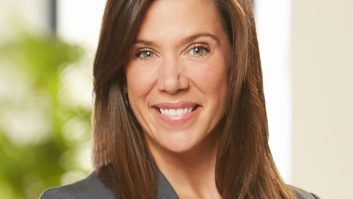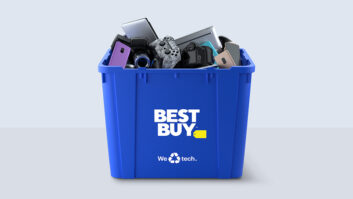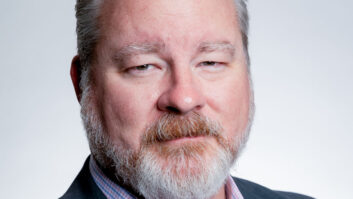Best Buy outlined a sweeping change of its corporate culture, not to mention its approach to the market, unveiling its Consumer Centricity program which, if implemented successfully, will reinvent the chain and possibly CE retailing.
During the May 3-4 annual financial analysts meeting here, details of the plan were revealed which involves Consumer Centricity stores being expanded from 32 test stores to as many as 110 additional locations in the United States during fiscal 2005.
Brad Anderson, vice chairman/CEO, and a phalanx of top Best Buy executives provided details on this strategy, in development for 18 months.
Consumer Centricity is not a format change, per se, as in Best Buy’s past. If implemented successfully, Best Buy will change from a top/down management culture, from corporate headquarters to the store managers and sales associates, to a bottom/up culture where information on customers, merchandising and marketing ideas flow up to corporate. It is then the corporate side’s job to support the local decision-makers.
While other national chains of all types have tried to provide merchandise for specific areas of the country and specific tastes, no strategy as ambitious as this program has ever been undertaken.
Consumer Centricity will alter the chain’s corporate culture by focusing on the most profitable customer groups who shop at Best Buy, and training the rank-and-file full-time and part-time store employees to provide better service. As Anderson put it, “This enables us to engage more deeply with customers by empowering employees to deliver tailored products, solutions and services to customers through our stores, Web sites, call centers and in-home services.”
The whole idea is to listen to the feedback from the people who deal with Best Buy customers every day — the store employees and managers — and have corporate management give them the tools to do their job. The goal is to “increase our competitive advantages, boost our market share and deliver superior financial results,” Anderson said.
If this sounds scary to you, it was far more frightening to top Best Buy execs who eventually signed on to the program.
This approach first came to light in late 2002 in a period when, as Anderson put it, “success was bliss,” and he was enjoying his first few months as Best Buy’s CEO. He attended a seminar being held by professor Larry Selden, former head of Columbia University’s Graduate School of Business, who cited Best Buy as one of several leading U.S. companies whose performance was not as profitable as it should be, based on its market share and other factors.
The initial reaction from Anderson was typical, he said, “I was in denial.” The basic idea of Selden, which Best Buy is attempting to put in practice with this new strategy, is to “develop a ‘portfolio of customers,'” vs. offering everyone a portfolio of products.
Early on, Brian Dunn, executive VP/retail sales was asked by Anderson and Allen Lenzmeier, president/chief operating officer, “How do you identify our most profitable customers? How do you get them excited?” Dunn noted, “I was in the uncomfortable position of not knowing the answers and telling Brad and Allen that I didn’t know them.”
Dunn wasn’t the only Best Buy exec uncomfortable with this strategy early on. Mike Keskey, president of U.S. retail stores, has his direct reports spend months on future strategies, only to be told to scrap it and work on Consumer Centricity. When the project was completed Keskey was also told he may not have a role with Best Buy when the project was completed. “I’m a 23-year employee and I seriously considered leaving the company.” But after learning more about the strategy, and becoming one of the leaders in its implementation, he and his team are fully committed to the new approach.
Best Buy has identified five initial customer segments, with code names of typical consumers in quotes:
- “Barry,” the affluent professional who demands the latest technology and best service;
- “Buzz,” the active, young male consumer who wants technology and entertainment;
- “Ray,” the family man who wants technology that improves his and his family’s life;
- “Jill,” the busy suburban mom who wants to enrich her children’s lives with technology and entertainment;
- and no name here, just the small business customer who can use Best Buy’s product solutions and services.
Each store in the Consumer Centricity plan will be adapted to serve at least one dominant customer segment shopping at the store, such as a Best Buy For Business or Home Theater Experience departments. Employees are trained to focus on specific customer groups rather than just product categories.
This decentralization plan enables the local store managers and the employees to develop bundled product offerings, customer service, promotions and store design, the chain said. Store associates measure the results of all investments in terms of growth in segment revenue and return on investment, a metric taught to all employees as part of the program.
The 32 lab stores in the fiscal fourth quarter had comp store sales gains that were 7 percent higher than other Best Buy stores in the United States. The lab stores’ gross profit rate was about 50 basis points higher than the average U.S. Best Buy store. But expenses were 240 basis points higher than a typical Best Buy store, although that is a factor the chain said will be reduced as its labor model and economies of scale will reduce costs and improve profitability. So far the company has spent $50 million in store capital expenditures for Consumer Centricity stores in fiscal 2005.
The 110 stores to get the Consumer Centricity makeover will be in Arizona, California, Nevada, Oregon and Washington, and will be implemented prior to the holiday season.













